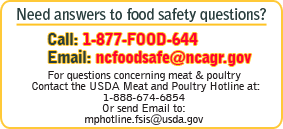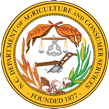Look for links to information on the most common foodborne pathogens?
The most commonly recognized foodborne infections are those caused by the bacteria Campylobacter, Salmonella, and E. coli O157:H7, and by a group of viruses called calicivirus, also known as the Norwalk and Norwalk-like viruses.
Campylobacter is a bacterial pathogen that causes fever, diarrhea, and abdominal cramps. It is the most commonly identified bacterial cause of diarrheal illness in the world. These bacteria live in the intestines of healthy birds, and most raw poultry meat has Campylobacter on it. Eating undercooked chicken, or other food that has been contaminated with juices dripping from raw chicken is the most frequent source of this infection.
Salmonella is also a bacterium that is widespread in the intestines of birds, reptiles and mammals. It can spread to humans via a variety of different foods of animal origin. The illness it causes, salmonellosis, typically includes fever, diarrhea and abdominal cramps. In persons with poor underlying health or weakened immune systems, it can invade the bloodstream and cause life-threatening infections.
E. coli O157:H7 is a bacterial pathogen that has a reservoir in cattle and other similar animals. Human illness typically follows consumption of food or water that has been contaminated with microscopic amounts of cow feces. The illness it causes is often a severe and bloody diarrhea and painful abdominal cramps, without much fever. In 3% to 5% of cases, a complication called hemolytic uremic syndrome (HUS) can occur several weeks after the initial symptoms. This severe complication includes temporary anemia, profuse bleeding, and kidney failure.
Calicivirus, or Norwalk-like virus is an extremely common cause of foodborne illness, though it is rarely diagnosed, because the laboratory test is not widely available. It causes an acute gastrointestinal illness, usually with more vomiting than diarrhea, that resolves within two days. Unlike many foodborne pathogens that have animal reservoirs, it is believed that Norwalk-like viruses spread primarily from one infected person to another. Infected kitchen workers can contaminate a salad or sandwich as they prepare it, if they have the virus on their hands. Infected fishermen have contaminated oysters as they harvested them.
.jpg)


